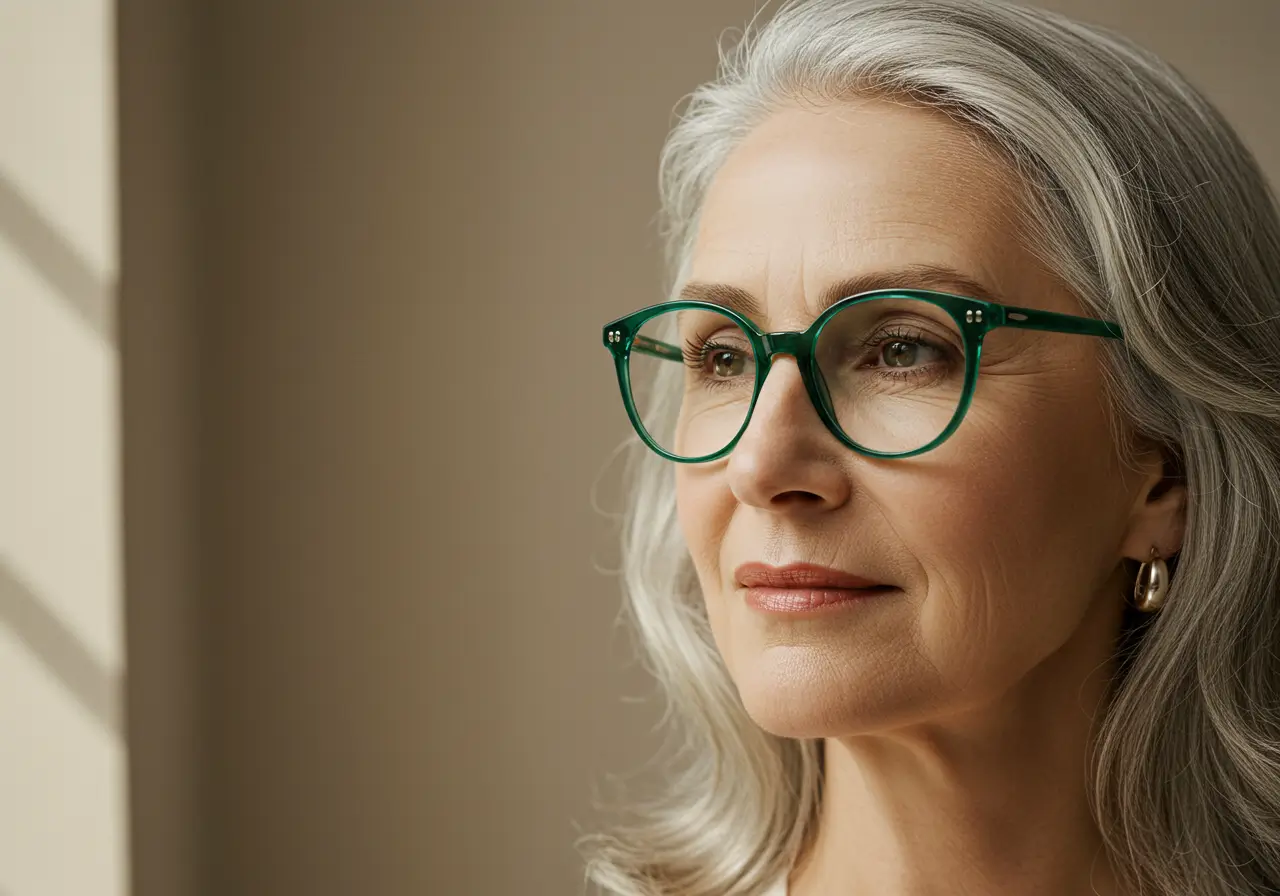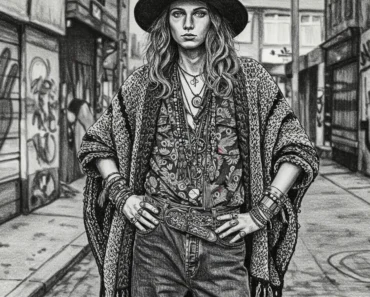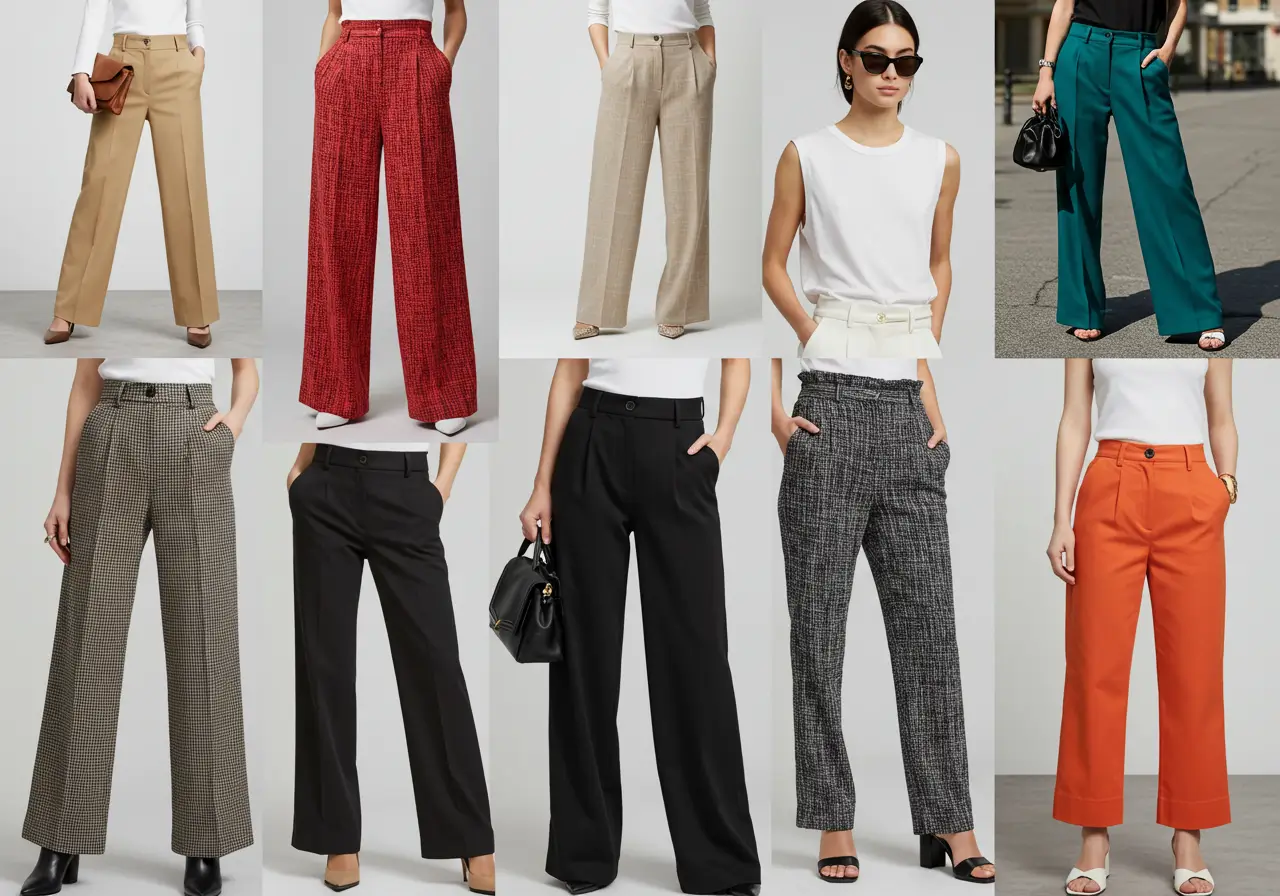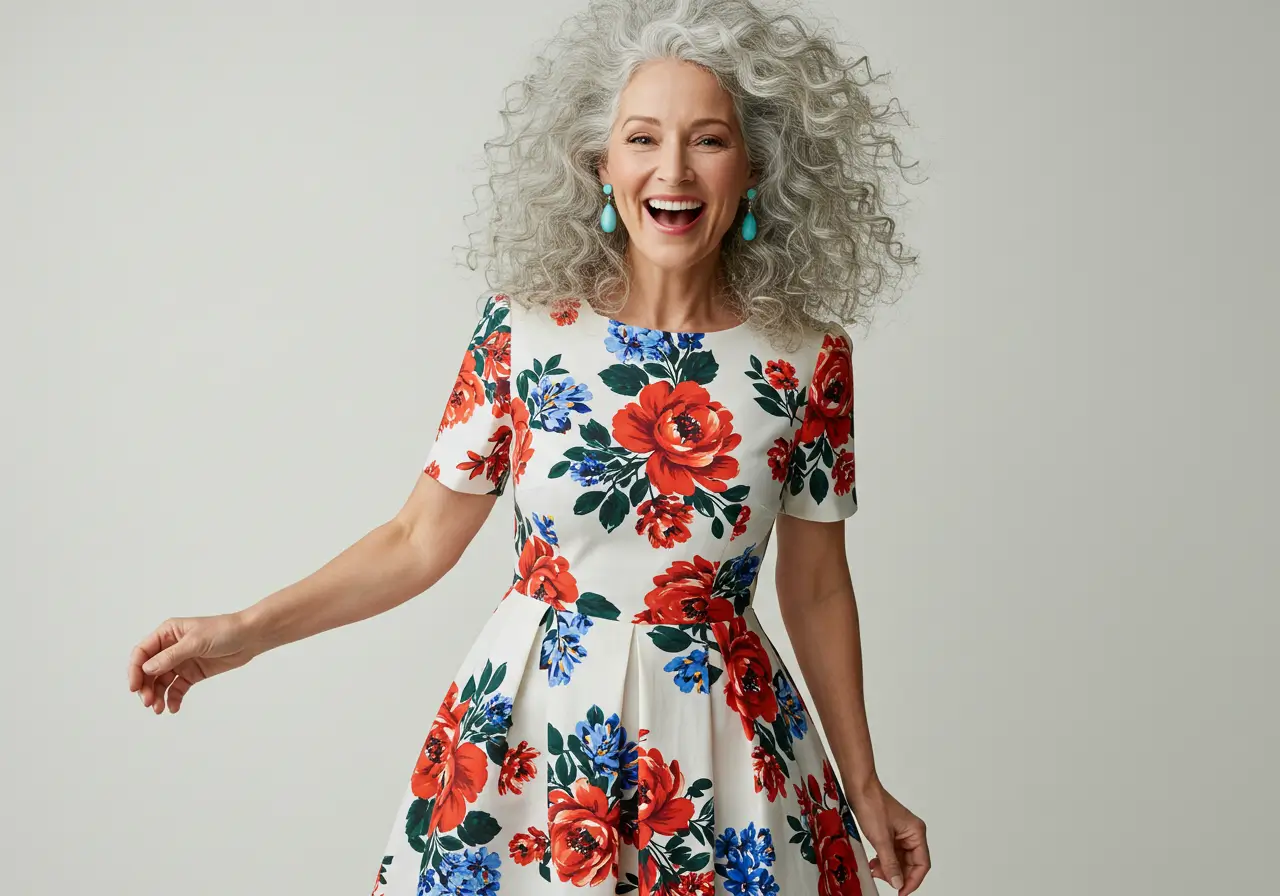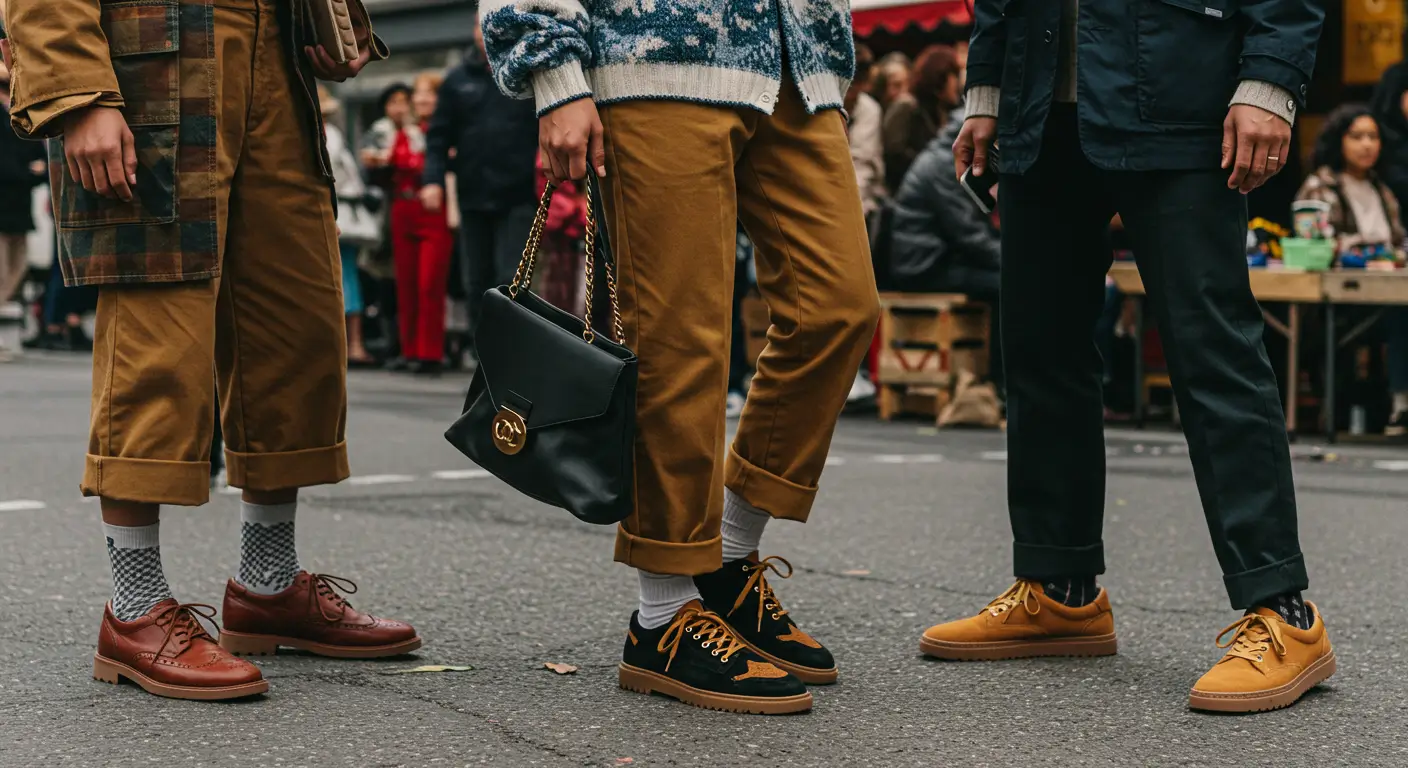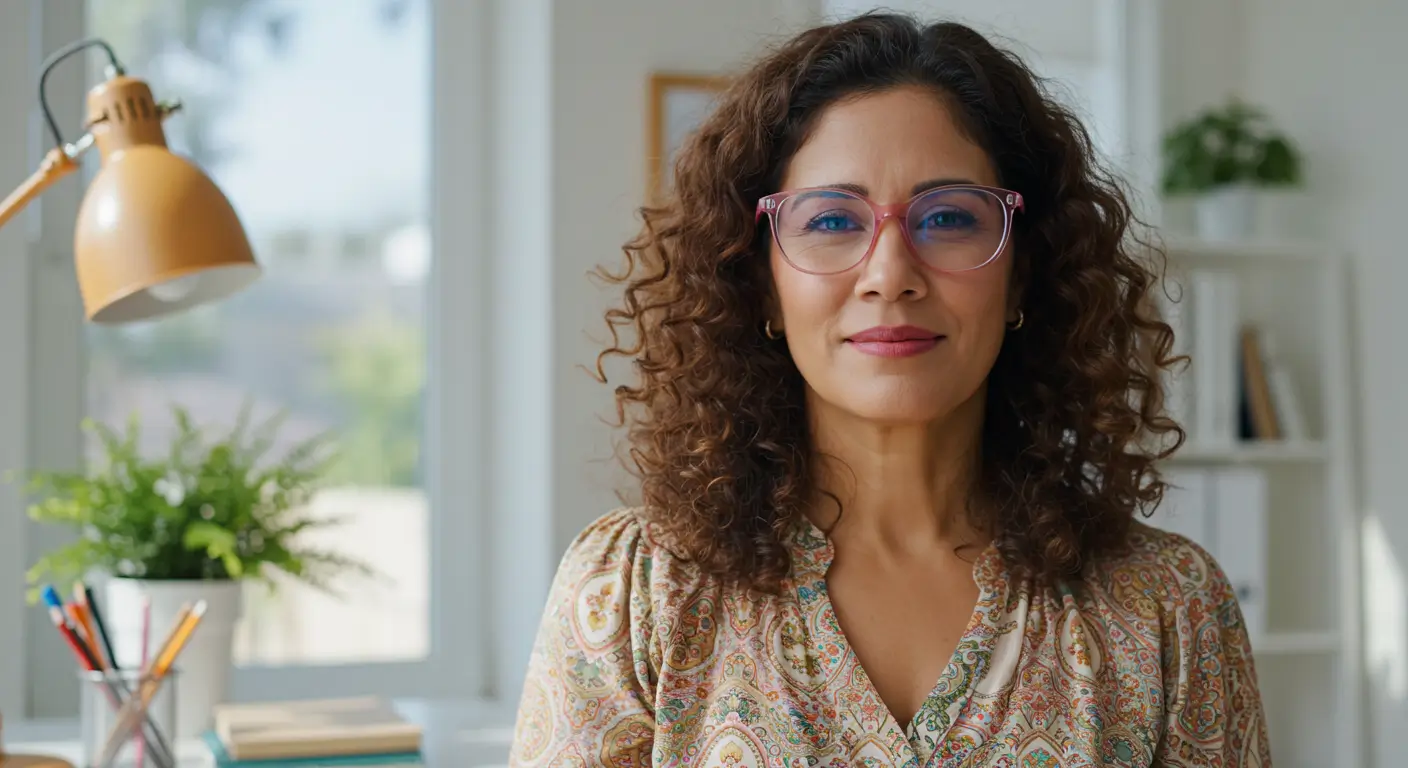Understanding the story behind cat-eye glasses adds another layer of appreciation for their design. They were not merely a fleeting trend but a revolutionary development in eyewear, born from creativity and perfectly timed to capture the spirit of an era.
A Spark of Invention: Altina Schinasi Miranda
The genesis of the cat-eye frame is often attributed to Altina Schinasi Miranda, a multi-talented artist, designer, and filmmaker. In the late 1920s and early 1930s, while working as a window display designer for Fifth Avenue shops, she observed the limited and, in her view, uninspired options available for women’s eyeglasses. Most frames were simple, round, and purely functional, lacking aesthetic appeal.
Schinasi felt women deserved eyewear that was as fashionable and expressive as their clothing or makeup. Inspired by the whimsical shapes of Harlequin masks she saw during the Carnevale festival in Venice, Italy, she envisioned frames with pointed, upswept outer edges. These masks, designed to cover only the eyes and upper face, often featured exaggerated, lifted corners. Schinasi translated this concept into eyewear, sketching designs that added flair and femininity to staid optical offerings.
Initially, manufacturers were skeptical. Her designs were unconventional, a radical departure from the norm. Undeterred, Schinasi persisted, eventually partnering with a local optical shop to produce her first “Harlequin” glasses. They were an immediate success, catching the eye of fashion-forward women seeking something different. Schinasi patented her design and won recognition for her innovation, including the Lord & Taylor American Design Award in 1939. Her creation laid the foundation for what would evolve into the ubiquitous cat-eye glasses.
The Rise to Prominence: 1940s and 1950s

While Schinasi planted the seed, the 1940s saw the style slowly gain traction, but it was the post-war era of the 1950s when cat-eye glasses truly exploded in popularity. This decade was characterized by a return to glamour, emphasized femininity, and a burgeoning consumer culture. Eyewear transitioned from a purely medical device to a key fashion accessory.
-
Post-War Optimism and Glamour: The 1950s embraced a more decorative aesthetic. Fashion featured cinched waists, full skirts, and meticulous attention to detail. Cat-eye glasses fit perfectly into this picture, adding a touch of sophistication and allure.
-
Material Innovation: The increasing availability and refinement of plastics, particularly acetate, allowed for greater creativity in frame design. Unlike earlier metal or basic shell frames, acetate could be produced in a vast array of colors, patterns (like tortoiseshell), and could be easily molded into the distinctive upswept shapes. This enabled designers to experiment with bolder, thicker frames and intricate embellishments.
-
Hollywood Influence: The silver screen played a pivotal role. Style icons like Marilyn Monroe, Audrey Hepburn (famously in “Breakfast at Tiffany’s,” although technically a modified Wayfarer, it shared the glamorous vibe), Grace Kelly, and Elizabeth Taylor were frequently photographed wearing various styles of cat-eye glasses. Their adoption of the trend cemented its status as chic and desirable, influencing millions of women to follow suit. They became synonymous with intelligence, sophistication, and a hint of playful allure.
10 Trendy Cat-Eye Glasses Styles for a Retro Look
Now, let’s explore ten distinct styles of cat-eye glasses that capture that desirable blend of retro fashion charm and contemporary relevance. These are style categories rather than specific brands, offering inspiration you can adapt to your search.
1. The Classic 1950s Upsweep

-
Description: This is the quintessential cat-eye. Think moderate thickness acetate frames, a distinct and confident upsweep at the browline (often ending in a noticeable but not overly sharp point), and usually a rounded lower rim. The shape is balanced and instantly recognizable.
-
Retro Vibe: Pure 1950s glamour and sophistication. Evokes images of Hollywood starlets, chic housewives, and sharp-witted secretaries from the era.
-
Who It Suits: Very versatile, particularly flattering on oval, square, and round faces due to the blend of curves and lift.
-
Styling: Perfect for full retro fashion looks (swing dresses, pencil skirts) but also adds instant vintage charm to modern outfits like jeans and a crisp white shirt, or a simple sheath dress. Classic colors like black, tortoiseshell, or deep red enhance the vintage feel.
-
Details: Often features classic details like double-dot rivets near the hinges.
2. The Subtle Modern Lift
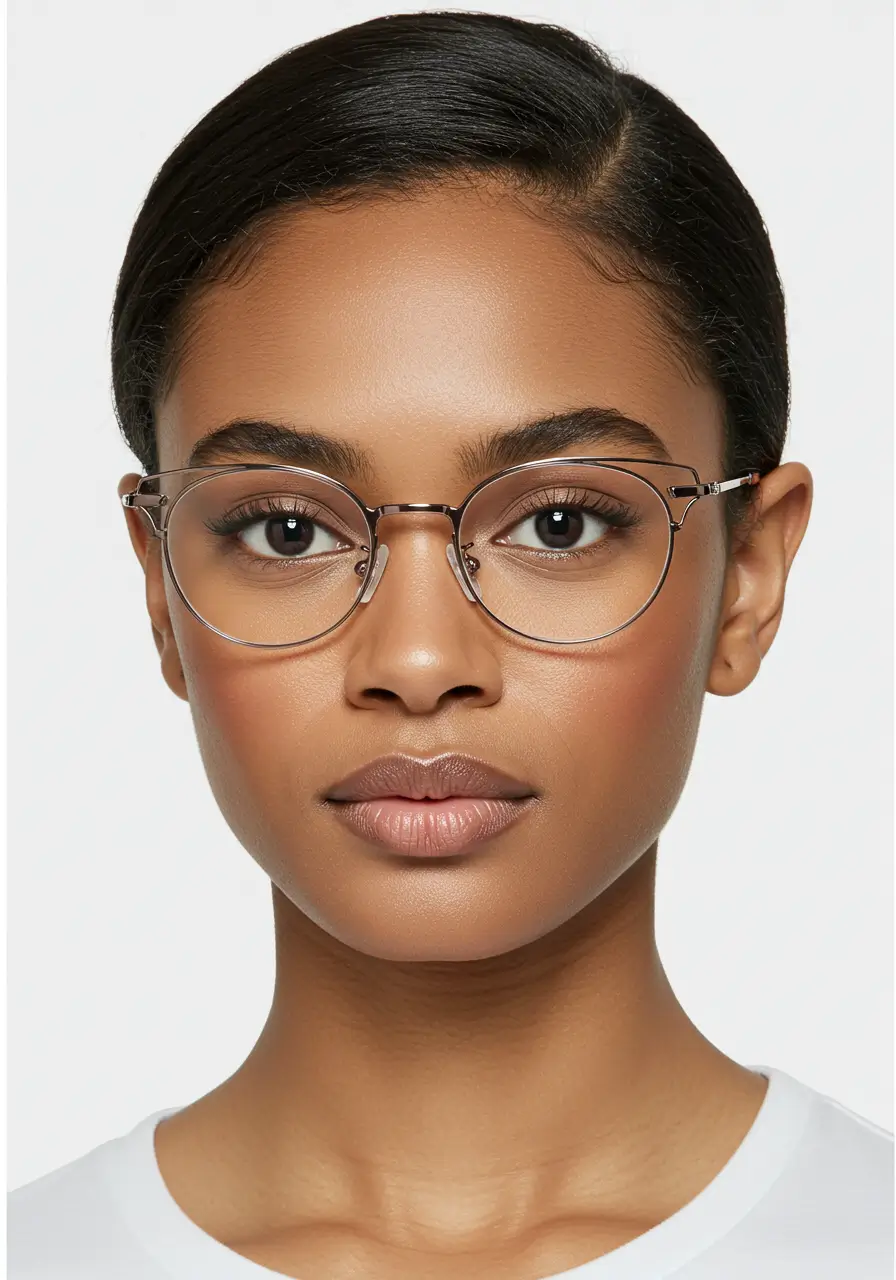
-
Description: A more understated take on the trend. The upsweep is gentle, more of a soft lift than a dramatic wing. Frames might be slightly thinner, often in acetate or metal. The overall shape feels less overtly retro but retains the flattering upward pull.
-
Retro Vibe: A quiet nod to vintage, suitable for those who like the cat-eye shape but prefer a less theatrical look. Feels sophisticated and contemporary.
-
Who It Suits: Excellent for almost all face shapes, especially heart and diamond faces, as the subtlety avoids overwhelming narrower features. A great introductory style.
-
Styling: Highly versatile for everyday wear, including professional settings. Pairs effortlessly with modern tailoring, casual wear, and minimalist aesthetics. Comes in a wide range of colors, including clear acetate or light metallics.
-
Details: Usually minimal, focusing on clean lines and the gentle curve.
3. Bold and Angular Cat-Eye

-
Description: This style pushes the cat-eye shape into more geometric territory. Expect sharper angles, thicker acetate frames, more pronounced and pointed wings, and sometimes a flatter browline leading into the upsweep. The lower rim might also be more angular.
-
Retro Vibe: Leans more towards late 60s Mod or even 80s does 50s interpretations. Feels strong, confident, and fashion-forward.
-
Who It Suits: Makes a strong statement. Particularly good for round faces needing definition or oval faces that can handle bold shapes. Can be striking on square faces if the angles complement rather than clash.
-
Styling: Best paired with confident outfits. Works well with minimalist clothing where the glasses become the focal point, or with bold graphic prints and color-blocking for a high-impact look. Often comes in striking solid colors like black, white, or bright hues.
-
Details: The shape itself is the main detail; embellishments are often kept minimal to let the geometry shine.
4. Thin Metal Wire Cat-Eye

-
Description: A delicate and often minimalist interpretation. The frame is constructed from thin metal wire, outlining the cat-eye shape. The upsweep is usually present but feels lighter and airier compared to acetate styles. Some might be semi-rimless.
-
Retro Vibe: Hints at vintage elegance but feels very contemporary and refined. Less overtly retro fashion, more sophisticated chic.
-
Who It Suits: Flattering on many face shapes, especially heart and diamond faces, due to their lightness. Great for those who prefer less visually heavy frames.
-
Styling: Pairs beautifully with professional attire, elegant evening wear, or refined casual looks. Looks sophisticated in classic metallic finishes like gold, silver, rose gold, or gunmetal, but also available in colored metals.
-
Details: Focus is on the clean lines of the metal; some might feature subtle enamel details or textured finishes on the wire.
5. Timeless Tortoiseshell Cat-Eye
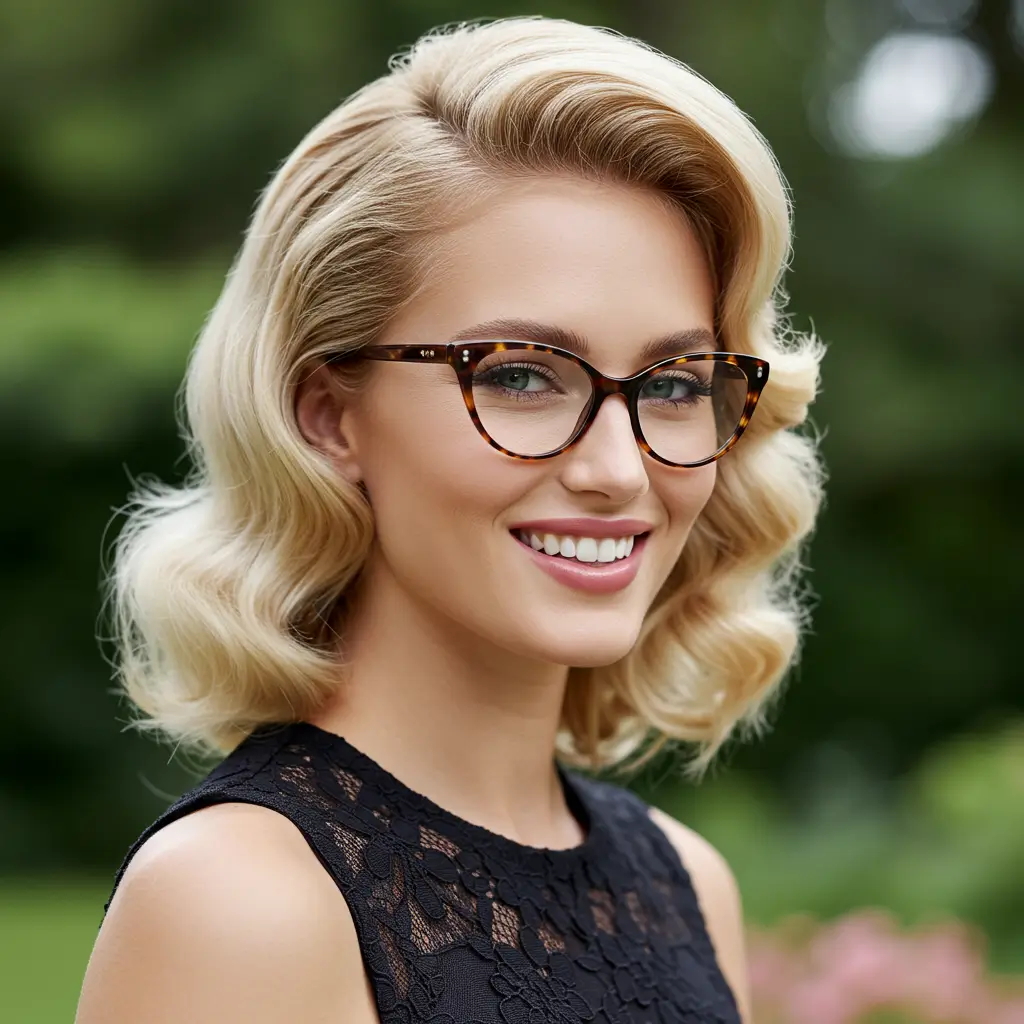
-
Description: Less about a specific shape variation and more about the iconic pattern. Tortoiseshell (or Havana) acetate offers a warm blend of brown, amber, and black tones, providing depth and richness. It can be applied to classic, subtle, or even bolder cat-eye shapes.
-
Retro Vibe: Deeply rooted in mid-century style, tortoiseshell feels both classic and intellectual. It is inherently vintage yet perpetually fashionable. A cornerstone of retro fashion eyewear.
-
Who It Suits: The warm, mottled tones are flattering on most skin tones. The pattern adds visual interest without the starkness of solid black. Suits virtually any cat-eye shape preference.
-
Styling: Incredibly versatile. Tortoiseshell works with everything from tweed jackets and tailored trousers to casual denim and cozy sweaters. It adds warmth and sophistication to any look.
-
Details: The pattern itself is the key feature; hardware is often classic gold or silver-toned.
6. Embellished and Glamorous Cat-Eye
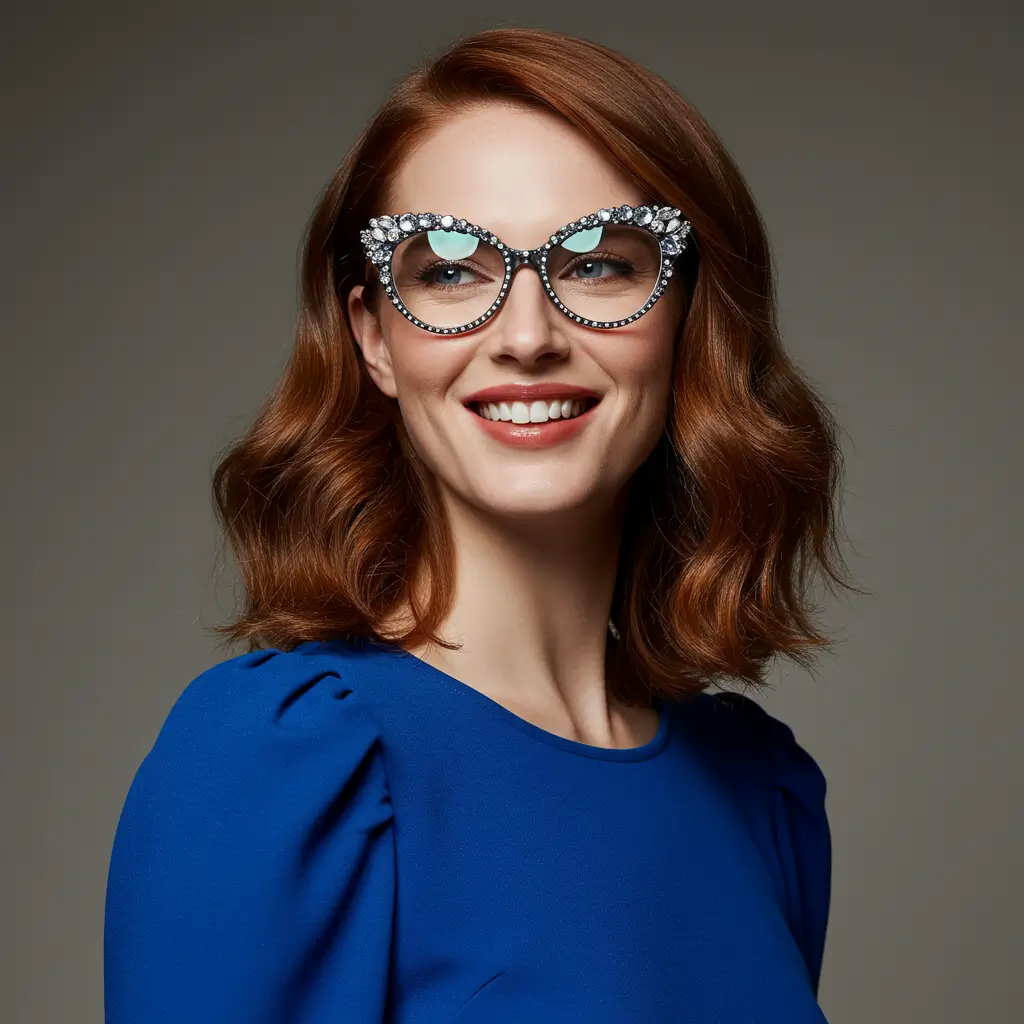
-
Description: These frames embrace decoration. Think cat-eye glasses adorned with small crystals, pearls, metal studs, glitter infusions, intricate carvings, or contrasting color blocks, often concentrated at the upswept corners or along the temples.
-
Retro Vibe: Channels the maximalist glamour of the late 50s and early 60s, where eyewear was often treated like jewelry. Feels playful, celebratory, and undeniably feminine.
-
Who It Suits: Those who love to make a statement and embrace playful glamour. Best suited to oval faces or those confident enough to carry the extra detail. The base shape should still complement the face shape.
-
Styling: Ideal for evening wear, special occasions, or adding a spark to a simple outfit. Pair with elegant dresses, jumpsuits, or even a simple black top to let the glasses shine. Keep other accessories relatively simple.
-
Details: The embellishments are the star – from subtle sparkle to bold adornments.
7. Vibrant Color Acetate Cat-Eye
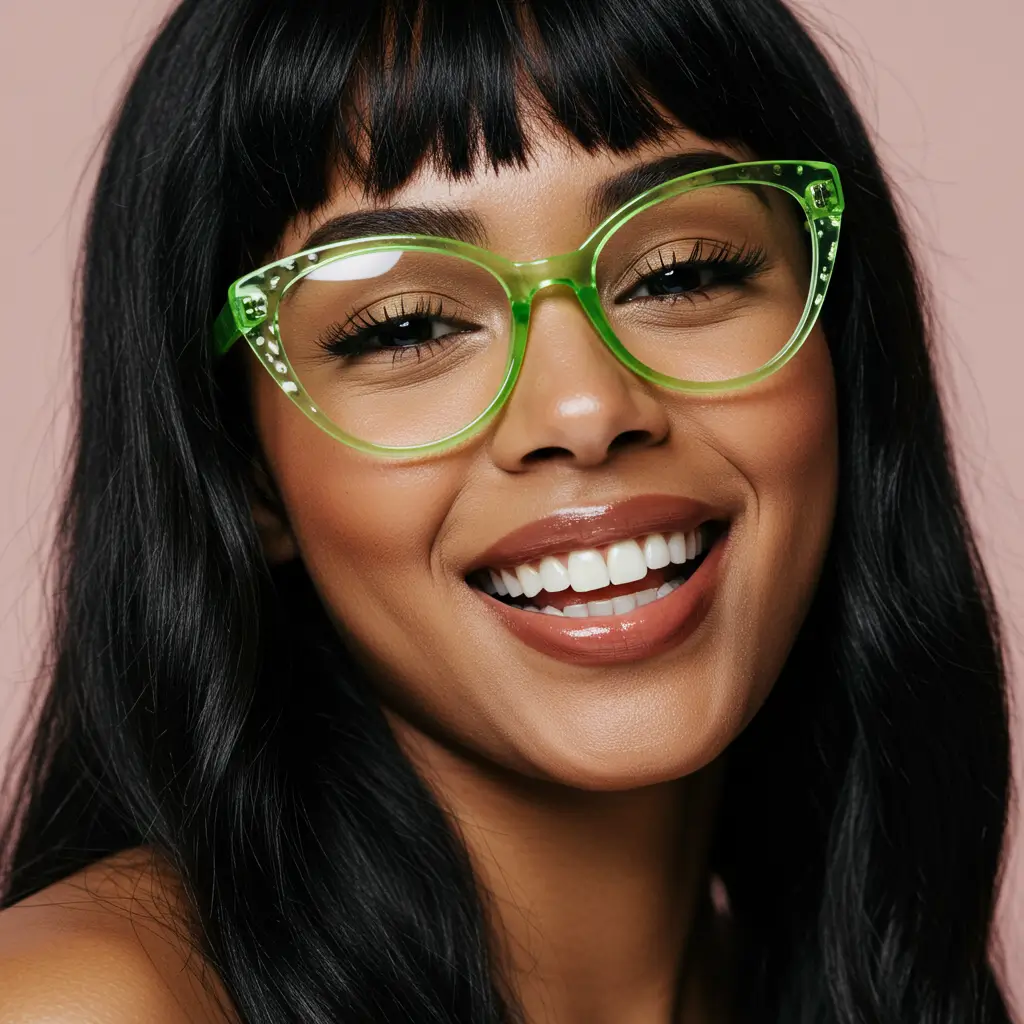
-
Description: Moving beyond classic black and tortoiseshell, this category embraces bold, saturated color. Think cherry red, cobalt blue, emerald green, sunny yellow, or even translucent pastel acetates in the cat-eye shape.
-
Retro Vibe: Evokes the playful color experimentation of the 60s or can feel very modern depending on the exact hue and shape. Adds personality and fun.
-
Who It Suits: Anyone looking to inject color and personality into their look. The specific cat-eye shape should still suit the face, but the color choice is about personal expression.
-
Styling: Can be used to pick up accent colors in an outfit or serve as a deliberate pop of contrast. Red frames offer a classic pin-up feel, while blues and greens can feel fresh and modern. Pair with complementary colors or let them stand out against neutrals.
-
Details: The color is the main event; the frame shape might be classic or modern.
8. The Half-Rim (Clubmaster-Inspired) Cat-Eye
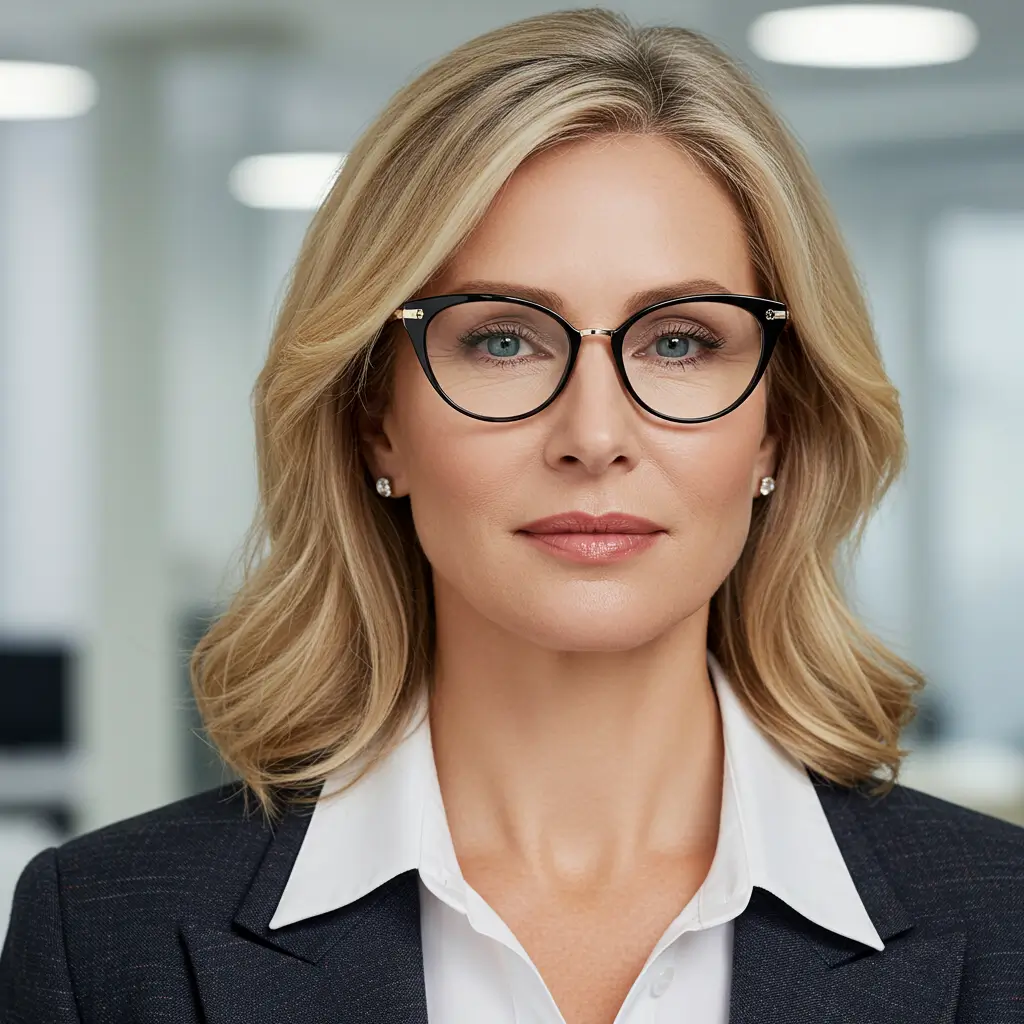
-
Description: This style combines the upswept shape with a half-rim or browline construction. Typically, the upper part of the frame (the browline and upswept corners) is thicker acetate, while the lower rim is thin metal wire or absent altogether (rimless).
-
Retro Vibe: Merges the classic 50s cat-eye with the intellectual 50s/60s Browline or “Clubmaster” style. Feels sophisticated, slightly academic, yet undeniably stylish.
-
Who It Suits: Very flattering for many, particularly heart shapes (as it draws attention upward) and oval faces. Offers structure without the visual weight of a full acetate frame.
-
Styling: Excellent for both professional and smart-casual looks. Pairs well with button-down shirts, blazers, tailored dresses, and chinos. Classic color combinations include black or tortoiseshell acetate tops with gold or silver metal bottoms.
-
Details: The contrast between the acetate brow and metal rim is the defining feature.
9. Oversized and Dramatic Cat-Eye
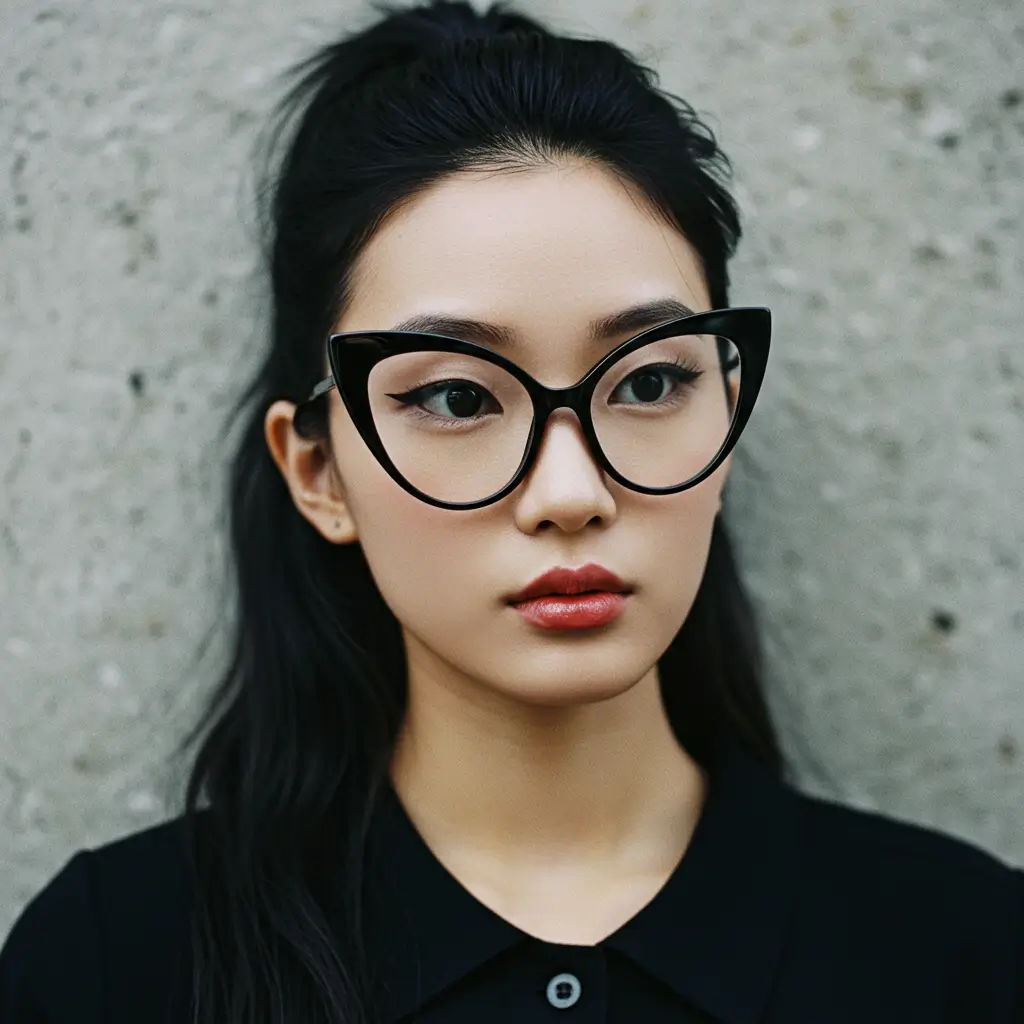
-
Description: Taking cues from 60s and 70s trends, these cat-eye glasses are scaled up. The lenses are larger, the frames are often thicker, and the overall presence is much bolder than classic styles. The upsweep might be exaggerated or softened within the larger frame.
-
Retro Vibe: Channels late 60s/early 70s diva chic or a bold Mod aesthetic. Makes a confident, fashion-forward statement.
-
Who It Suits: Best on oval faces or larger facial structures that can balance the size. Can overwhelm petite faces. Requires confidence to wear well.
-
Styling: Treat them as a major accessory. Pair with streamlined outfits to let the glasses dominate, or go full maximalist with bold prints and silhouettes. Often seen as sunglasses but increasingly popular as optical frames for the daring.
-
Details: Size is the key feature. Materials are usually bold acetate in solid colors, tortoiseshell, or even dramatic patterns.
10. Micro Cat-Eye (The Slim & Sharp Look)

-
Description: A counterpoint to the oversized trend, micro cat-eyes feature very narrow, horizontally elongated lenses and a sharp, often subtle, upsweep. They sit higher on the face, more like a style accent than functional coverage.
-
Retro Vibe: References late 90s/early 2000s interpretations of mid-century shapes, or even earlier, more severe 1940s styles. Feels edgy, futuristic-retro, and highly fashionable.
-
Who It Suits: More of a fashion statement than a universally flattering shape. Works best on oval or diamond faces with delicate features.
-
Styling: Part of a specific edgy or high-fashion aesthetic. Pair with minimalist outfits, streetwear influences, or avant-garde looks. Often worn lower on the nose as a style element. Typically comes in black, white, or bold primary colors.
-
Details: The extreme slimness and sharp lines are the focus.
Also Read: Blue Light Glasses: Do They Really Work?
The Evolution: 1960s and Beyond
The 1960s saw the cat-eye shape evolve further, reflecting the changing fashion landscape.
-
Mod Influence: While the classic 50s cat-eye remained popular, the Mod movement influenced eyewear towards bolder, more geometric shapes. Some cat-eyes became larger, more angular, or featured sharper, more dramatic points. Thinner, more streamlined versions also emerged, offering a sleeker take.
-
Sunglasses: The cat-eye shape proved incredibly popular for sunglasses, often rendered in larger sizes and dramatic colors, becoming a staple of beach and resort wear.
-
Waning and Revival: Like many fashion trends, the extreme popularity of cat-eye glasses eventually waned in the 1970s and 80s as oversized and aviator styles took precedence. However, their iconic status ensured they never disappeared completely. The enduring appeal of retro fashion led to periodic revivals, and by the 2000s and especially the 2010s, cat-eye glasses experienced a major resurgence, embraced by new generations and reinterpreted by contemporary designers.
Today, cat-eye glasses stand as a testament to timeless design, continuously adapted yet always retaining that signature hint of vintage glamour.
Defining Features: What Makes a Cat-Eye?
While variations abound, certain core characteristics define the cat-eye glasses silhouette. Understanding these elements helps in identifying the style and appreciating its nuances.
-
The Upswept Browline: This is the defining feature. The top line of the frame sweeps upwards and outwards at the edges, where the frame front meets the temples (arms). This upward flick can range from a subtle lift to a dramatic, pointed wing. It draws the eye upward, creating a visually lifting effect on the face.
-
Emphasis on the Outer Edges: The design intentionally draws attention to the upper outer corners of the frame. This emphasis contributes to the feminine, feline-inspired aesthetic. The thickness of the frame or added embellishments often concentrate at these points.
-
Varying Lens Shapes: While the browline is upswept, the bottom rim of the lenses can vary. Classic styles often have a rounded bottom, balancing the pointed top. More modern or angular interpretations might feature straighter or more squared-off lower rims.
-
Temple Connection: The temples (arms) typically connect at the highest point of the upswept outer edge, further accentuating the lift. Temple design itself can vary widely, from thin and simple to thick and decorative.
-
Material and Detail: Traditionally crafted from acetate, allowing for rich colors and patterns, modern cat-eyes also appear in metal, combination materials, and feature diverse details like embedded crystals, contrasting colors, cut-outs, or textured finishes.
It is the interplay of these elements – particularly the signature upswept browline – that creates the unmistakable cat-eye look, a shape designed to enhance and flatter.
The Enduring Appeal: Why We Still Love Cat-Eye Glasses
Decades after their debut, cat-eye glasses remain a favorite. What contributes to their lasting popularity in the world of retro fashion and contemporary style?
-
Timeless Elegance: The shape possesses a classic sophistication that transcends fleeting trends. It harkens back to an era of perceived glamour and meticulous style, yet feels relevant today. They add instant polish to almost any outfit.
-
Flattering Lift: The signature upswept design cleverly draws the eye upwards, creating a subtle lifting effect on the wearer’s features. This can make cheekbones appear higher and add definition to the face.
-
Feminine Allure: The shape is intrinsically linked with femininity, glamour, and a touch of mystique. It enhances the eyes and adds a playful yet sophisticated edge. While traditionally associated with women’s eyewear, modern interpretations are increasingly embraced across the gender spectrum.
-
Versatility in Style: Cat-eye glasses are surprisingly versatile. Depending on the specific design – subtle and thin, bold and angular, classic tortoiseshell, vibrant color, embellished – they can suit a vast range of personal styles, from professional chic to quirky vintage to minimalist modern.
-
Intellectual Chic: Perhaps due to early associations with librarians or secretaries in popular culture (often depicted with a sharp wit), cat-eyes can also project an air of intelligence and competence, blending style with substance.
-
Strong Retro Connection: For lovers of retro fashion, cat-eye glasses are an essential accessory. They instantly evoke the aesthetics of the 1950s and 60s, allowing wearers to channel the style of icons like Audrey Hepburn or Marilyn Monroe. They are a powerful signifier of vintage appreciation.
-
Statement Potential: Even a subtle cat-eye makes more of a statement than a simple round or rectangular frame. Bolder variations allow wearers to express individuality and confidence through their eyewear choice.
The combination of flattering design, historical resonance, and stylistic versatility ensures that cat-eye glasses remain a powerful and beloved choice in the world of eyewear.
Choosing Your Perfect Pair: A Guide
With so many variations available, selecting the right cat-eye glasses can feel overwhelming. Considering a few key factors can help you find the pair that best suits your features and style.
Understanding Your Face Shape
While personal preference is paramount, understanding your face shape can provide helpful guidelines for finding the most flattering frame styles. The goal is typically to choose a frame shape that contrasts with your face shape to create balance.
-
Round Faces: Characterized by soft curves, full cheeks, and equal width and length.
-
Goal: Add definition and angles.
-
Best Cat-Eyes: Look for more angular or squared-off cat-eye shapes. Styles with a strong, upswept browline and sharper corners can help lengthen the face and add structure. Avoid very small or overly rounded cat-eye styles. Wider frames that extend slightly beyond the temples can also be flattering.
-
-
Square Faces: Defined by a strong jawline, broad forehead, and roughly equal width and length.
-
Goal: Soften angular features.
-
Best Cat-Eyes: Opt for cat-eye glasses with softer curves and rounded edges rather than sharp, geometric points. Styles where the upsweep is more gentle and the lower rim is curved can complement angular features beautifully. Thinner frames can also work well. Oval-shaped cat-eyes can provide a nice contrast.
-
-
Oval Faces: Considered balanced, with slightly wider cheekbones tapering towards the forehead and chin. Length is greater than width.
-
Goal: Maintain balance.
-
Best Cat-Eyes: Oval faces tend to suit most frame shapes, including a wide variety of cat-eye glasses. You can experiment with classic styles, bold angular shapes, oversized versions, or subtle lifts. Ensure the frame width is proportionate, generally aligning with the widest part of your face.
-
-
Heart Faces (or Triangle Base-Up): Wider forehead and cheekbones, tapering to a narrower chin.
-
Goal: Add width to the lower part of the face, balance the forehead.
-
Best Cat-Eyes: Look for cat-eye styles that are wider at the bottom or have decorative details on the lower rims or end pieces. Frames that are wider than the forehead should be avoided. Styles with a lower, more subtle upsweep or those made from lighter materials or colors can prevent overwhelming the narrower lower face. Thin metal frames or bottom-heavy designs work well.
-
-
Diamond Faces: Narrow forehead and jawline, with wider, prominent cheekbones.
-
Goal: Soften cheekbones, draw attention to the eyes.
-
Best Cat-Eyes: Cat-eye glasses are often very flattering for diamond faces as the upswept shape highlights the eyes and complements the cheekbones. Styles with distinctive browlines, decorative temples, or detailing on the upper portion work well. Rimless or semi-rimless styles can also be excellent choices. Avoid frames that are excessively narrow.
-
Important Note: These are just guidelines! Confidence and personal style trump any “rule.” Try on different shapes and see what makes you feel best.
Considering Other Factors
Beyond face shape, other elements play a crucial role in finding your ideal cat-eye glasses:
-
Frame Size and Proportion:
-
Width: The frames should ideally be about as wide as your face at the temples. Frames that are too narrow can make the face look wider, while frames that are too wide can overwhelm your features.
-
Height: The top of the frame should generally sit below the eyebrow line, and the bottom should not rest on your cheeks when you smile.
-
Bridge Fit: The bridge of the glasses should sit comfortably on your nose without pinching or sliding down. A proper fit here is crucial for comfort.
-
-
Color:
-
Skin Tone: Consider colors that complement your skin’s undertones (warm, cool, or neutral). Warm tones (yellow, golden, peach) often suit tortoise, gold, brown, olive green, or warm reds. Cool tones (pink, blue, ash) pair well with black, silver, grey, blue, cool pinks, or mauves. Neutral tones can typically wear a wider range.
-
Eye/Hair Color: You might choose frames that contrast with or complement your eye or hair color.
-
Personal Style: Do you prefer classic neutrals (black, tortoise, clear), subtle metallics (gold, silver), or bold statement colors (red, blue, green)? Choose colors that align with your wardrobe and personality.
-
-
Material:
-
Acetate: The classic choice, offering durability and endless color/pattern possibilities (from solid hues to intricate tortoiseshell or marbled effects). Generally thicker and bolder.
-
Metal: Often thinner and lighter, offering a more delicate or minimalist look. Common finishes include gold, silver, gunmetal, and various colors. Can feel more modern.
-
Combination: Frames mixing acetate and metal offer unique textural and visual contrasts.
-
-
Level of “Cat-Eye” Drama:
-
Subtle Lift: A gentle upsweep offers a hint of the cat-eye shape without being overly dramatic. Great for everyday wear or a more conservative look.
-
Classic Wing: A distinct, noticeable upswept corner, characteristic of the 1950s style. Offers clear retro appeal.
-
Sharp & Angular: Modern interpretations often feature sharper points or more geometric lines for a bolder, edgier vibe.
-
Extended Wing: Some styles feature elongated end pieces that extend further outwards for a very dramatic, high-fashion statement.
-
-
Detailing and Embellishments: Consider if you prefer clean, simple lines or frames with added details like rivets, crystals, contrasting temple tips, metal accents, cut-outs, or textured finishes. These details significantly impact the overall retro fashion feel or modern twist.
Styling Your Cat-Eye Glasses: Integrating Retro Charm
Once you have found your perfect pair of cat-eye glasses, the fun begins – incorporating them into your wardrobe. Their versatility allows them to enhance a wide range of looks.
Casual Cool
Do not reserve your cat-eyes for special occasions. They add instant polish to everyday outfits.
-
Jeans and Tee/Sweater: Elevate a simple jeans-and-top combination with classic black or tortoiseshell cat-eye glasses. It adds intention and a touch of retro fashion flair without feeling overdressed.
-
Simple Day Dress: A floral or solid-colored A-line or shift dress gains personality with a pair of subtly lifted or colored acetate cat-eyes.
-
Weekend Wear: Even with leggings and an oversized cardigan, popping on a pair of comfortable metal or subtle acetate cat-eyes shows attention to detail.
Professional Polish
Cat-eye glasses can project competence and style in the workplace.
-
Tailored Separates: Pair sharp black or tortoiseshell cat-eyes (perhaps a classic or half-rim style) with blazers, tailored trousers, or pencil skirts for a look that is both professional and chicly retro.
-
Sheath Dress: A well-fitting sheath dress becomes even more powerful with sophisticated cat-eye glasses. Consider a subtle modern lift or a thin metal frame for understated elegance.
-
Button-Down Shirt: A crisp button-down shirt, whether tucked into trousers or worn over a camisole, looks sharp and slightly intellectual with classic or browline-style cat-eyes.
Evening Elegance
Cat-eye glasses were made for dressing up.
-
Little Black Dress: The ultimate pairing. Almost any style of cat-eye, from classic black acetate to embellished or metallic frames, complements an LBD perfectly.
-
Jumpsuit or Evening Trousers: Add glamour to sleek jumpsuits or wide-leg evening trousers with dramatic, embellished, or bold angular cat-eyes.
-
Gowns and Formal Wear: For black-tie events, consider elegant thin metal cat-eyes or subtly embellished frames that enhance rather than compete with your outfit.
Leaning into Retro Fashion
If you love vintage style, cat-eye glasses are essential.
-
1950s Pin-Up/Rockabilly: Pair classic winged cat-eyes (especially in red or black) with wiggle dresses, capris, fitted sweaters, and victory rolls or a high ponytail. Add a red lip for the full effect.
-
1960s Mod: Opt for bolder, more angular, or oversized cat-eye glasses in black, white, or vibrant colors. Style with mini skirts, A-line dresses, graphic prints, and sleek hairstyles.
-
Audrey Hepburn Inspired: Channel Holly Golightly with oversized, dark cat-eye sunglasses, or opt for classic, elegant optical frames paired with tailored capris, ballet flats, and a simple black top.
Styling Tip: Pay attention to your hairstyle. Updos, ponytails, and swept-back styles showcase the shape of cat-eye glasses beautifully. However, they also look great with bobs, waves, and even long, flowing hair.
Beyond Optical: Cat-Eye Sunglasses
The cat-eye shape is just as iconic and popular in sunglasses form. The principles of choosing and styling are similar, but sunglass versions often allow for even more drama.
-
Bolder Shapes: Cat-eye sunglasses frequently feature larger lenses and thicker frames than their optical counterparts.
-
Dark or Mirrored Lenses: Offer sun protection and add an element of mystery and glamour.
-
Versatility: From classic black Wayfarer-adjacent styles (like Audrey Hepburn’s) to extreme winged shapes in vibrant colors, cat-eye sunglasses offer a wide spectrum of looks perfect for sunny days and adding retro fashion flair to any outdoor ensemble.
Caring for Your Cat-Eye Glasses
To keep your stylish frames looking their best and lasting longer, follow basic eyewear care:
-
Use Both Hands: Always put on and take off your glasses using both hands to avoid stretching or misaligning the frame.
-
Case Storage: When not wearing them, store your cat-eye glasses in their protective case to prevent scratches and damage.
-
Proper Cleaning: Clean lenses regularly with a microfiber cleaning cloth and lens spray specifically designed for eyeglasses. Avoid using paper towels, tissues, or clothing, which can be abrasive.
-
Avoid Harsh Chemicals: Keep hairspray, perfume, and household cleaners away from your frames and lenses, as they can damage coatings and materials.
-
Regular Adjustments: If your glasses feel loose or crooked, visit your optician for professional adjustments to ensure a comfortable and proper fit.
The Enduring Legacy and Future of Cat-Eye Glasses
From Altina Schinasi’s innovative vision inspired by Venetian masks to their peak popularity in the mid-century and their constant reinvention today, cat-eye glasses have proven their staying power. They represent more than just a way to correct vision; they are a wearable piece of design history, a symbol of evolving femininity, and a versatile tool for personal expression.
Contemporary designers continue to draw inspiration from this iconic shape, ensuring its relevance for future generations. We see classic forms faithfully reproduced alongside bold experiments with materials, proportions, and technology. The cat-eye might become sharper, rounder, larger, smaller, minimalist, or maximalist, but that fundamental upward lift, echoing elegance and confidence, remains. They are a staple of retro fashion that refuses to feel dated, constantly finding new ways to feel fresh and exciting.
Conclusion: Embrace the Feline Mystique
Cat-eye glasses possess a unique magic. They blend vintage charm with modern sensibility, offering a flattering lift and an instant dose of sophistication. Their rich history, from revolutionary invention to Hollywood staple, adds depth to their aesthetic appeal. Whether you opt for a dramatic 1950s wing, a subtle modern curve, a bold angular statement, or a delicate metal frame, there is a cat-eye style to suit diverse tastes and complement various face shapes.
By understanding the nuances of the shape and considering factors like proportion, color, and material, you can find the pair that not only enhances your vision but also elevates your personal style. More than just an accessory, cat-eye glasses are an expression of confidence, a nod to timeless retro fashion, and a celebration of enduring design. Embrace their unique allure and let them add a touch of feline mystique to your look.
Unique FAQs
Are cat-eye glasses suitable for men?
Absolutely! While traditionally associated with women’s fashion due to their mid-century rise, eyewear is increasingly unisex. Many modern cat-eye styles, particularly those with subtler lifts, more angular shapes, or constructed from metal or classic black/tortoiseshell acetate, look fantastic on men. It boils down to personal style and finding a frame proportion that suits the individual’s face. Confidence is key.
Can you get cat-eye glasses with strong prescriptions or progressive lenses?
Yes, in most cases. The suitability depends more on the specific frame size and lens curvature than the cat-eye shape itself. Very large or dramatically curved frames can sometimes pose challenges for high prescriptions or progressive lenses (which require sufficient vertical height). Opticians can advise on the best cat-eye styles within a brand’s collection that accommodate specific lens requirements. Thicker acetate frames can also help camouflage lens thickness for stronger prescriptions.
What’s the difference between “vintage” and “retro” cat-eye glasses?
“Vintage” typically refers to items actually made in a past era (e.g., true 1950s cat-eye glasses). “Retro” (short for retrospective) refers to styles inspired by or imitating designs from a past era but made recently. Most cat-eye glasses you buy new today are retro, designed with vintage aesthetics in mind but using modern manufacturing techniques and materials.
How do I wear cat-eye glasses without looking like I’m in a costume?
The key is balance. If you choose a very dramatic, retro fashion cat-eye style, keep the rest of your outfit relatively modern and simple. Conversely, if your outfit is strongly vintage-inspired, a slightly more understated or modern cat-eye can prevent the look from feeling too costumey. Mixing vintage elements with contemporary pieces often creates the most stylish result. Choosing classic colors like black or tortoiseshell also helps them feel more timeless.
Which material is generally more durable for cat-eye glasses: acetate or metal?
Both can be durable, but they have different properties. High-quality acetate is very strong and flexible, less likely to break on impact, and holds its shape well. It can sometimes become brittle over many years or with extreme temperature changes. Metal frames, especially those made from titanium or stainless steel, are often very strong, lightweight, and resistant to corrosion. However, thin metal frames can sometimes bend more easily if mishandled, though they can often be bent back into shape by an optician. Durability often depends as much on the quality of the specific material and construction as on the material type itself.
